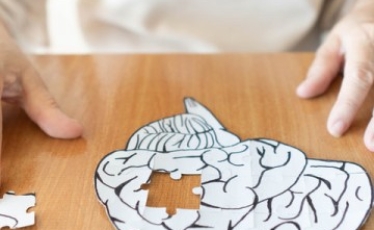+62 811-1300-9840
The Role of Thrombolytic Therapy in Stroke Management
By: dr. Ade Wijaya, Sp.N - Neurology Specialist

What is Thrombolytic Therapy?
Thrombolytic therapy or also known as thrombolysis is a procedure that aims to break up blood clots that block blood vessels. This procedure is one of the latest procedures that is effective in treating ischemic strokes by breaking up blood clots that block blood vessels in the brain.
The thrombolysis procedure is carried out by administering a drug / thrombolytic agent, namely alteplase, to the blood vessels of patients suffering from ischemic strokes. This drug is administered intravenously or through infusion into the veins or in certain conditions it can also be done intraarterially, namely directly into the blood vessels in the brain through a catheterization / DSA procedure.
What are the Benefits of Thrombolytic Therapy?
The human brain can function properly because of the intake of nutrients and oxygen delivered to brain cells through the blood vessels of the brain. In the condition of ischemic stroke, there is a blood clot that blocks the blood vessels of the brain so that brain cells can be damaged and die due to lack of nutrient and oxygen intake. Damage/death of these brain cells will cause paralysis/disability and even death in stroke patients. Thrombolytic therapy will break up the blockage and restore blood flow in the brain so that the brain can get the oxygen and nutrients it needs again. This effort is made to prevent disability/death in patients and significantly speed up the recovery process.
Who Needs Thrombolytic Therapy?
Every stroke patient with a blockage type who comes to the hospital within <4.5 hours from the onset of stroke symptoms (golden period) is a candidate for thrombolytic therapy. In certain conditions with special considerations, this therapy can still be given to patients with an onset of >4.5 hours as long as they meet certain requirements.
Therefore, it is important for each individual to recognize the early symptoms of stroke as well as possible. In general, early symptoms of stroke can be recognized using the BEFAST method (Balance, eye, face, arm, speech, and time). The characteristics of stroke symptoms are that they occur suddenly or unexpectedly. Here are the explanations for each.
B | Balance | Disorder of balance/coordination, sudden dizziness/swaying. |
E | Eye | Sudden visual disturbance or double vision. |
F | Face | Sudden crooked/asymmetrical mouth. |
A | Arm | Sudden weakness/paralysis/numbness/tingling in the hand/extremity (usually on one side). |
S | Speech | Difficulty speaking, slurred speech. |
T | Time | Time (get adequate medical treatment as soon as possible in the hospital emergency unit). |
Thrombolytic Therapy Procedure
Evaluate the patient's condition through medical interviews (anamnesis), physical examinations, and supporting examinations (laboratory tests and imaging/radiology techniques, such as CT scans, MRI, etc.).
Ensure that the patient meets the criteria/requirements for thrombolytic therapy.
Provide an explanation and ask for approval from the patient/patient's family to take action (informed consent).
Giving thrombolytic drugs through intravenous infusion.
Doctors and other medical personnel will closely monitor the patient's condition both in the Emergency Unit (ER) and in the stroke unit room. Blood pressure, respiratory rate, blood oxygen saturation, and patient complaints, signs of allergies or bleeding, and stroke symptoms experienced by the patient are monitored.
The doctor will provide other medications needed during treatment and work with the relevant medical team if necessary.
After the thrombolysis procedure is complete, and the patient's condition has stabilized, the doctor can immediately advise the patient to undergo rehabilitation and further care that includes long-term monitoring of the condition, speech therapy, physiotherapy, and psychosocial support to help the patient's recovery process.
In conclusion, someone who experiences stroke symptoms or is suspected of having a stroke should be taken as soon as possible to the Emergency Unit (ER) of the nearest hospital with sufficient facilities and capabilities in managing strokes to be evaluated and receive optimal treatment. Thrombolysis therapy is one of the latest treatment methods that is very effective in managing patients with blockage-type strokes to prevent disability/death and significantly speed up the recovery process.
Premier Jatinegara Hospital as a Pioneer
Premier Jatinegara Hospital is a pioneer in performing thrombolytic therapy on stroke patients in Indonesia and has been experienced in performing this procedure for more than 10 years. Premier Jatinegara Hospital has repeatedly received the Diamond Award from the World Stroke Organization as an appreciation and recognition for
achievement/success of Premier Jatinegara Hospital in managing stroke patients with the latest methods that comply with international standards.
for information & to make an appointment with a doctor, please contact:
- Contact Centre: 1 500 908
- WhatsApp Chatbot Appointment: +62 8122 2309 911
| Loading data... |
|---|



















